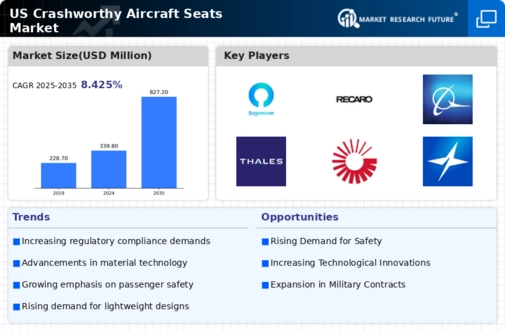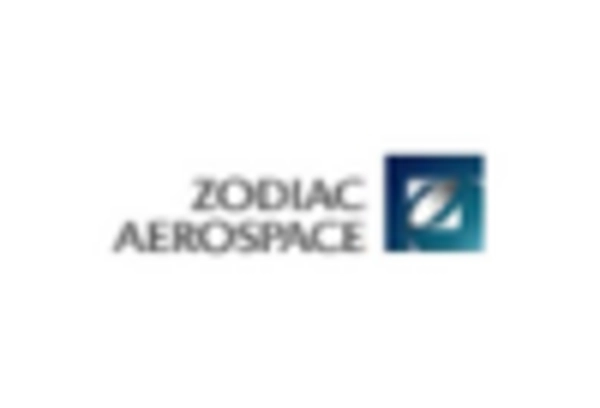Consumer Awareness and Advocacy
Consumer awareness and advocacy for aviation safety are increasingly influencing the crashworthy aircraft-seats market. As passengers become more informed about safety features and their importance, they are more likely to demand higher safety standards from airlines. Advocacy groups are also playing a role in promoting the need for crashworthy designs, pushing for regulations that ensure passenger protection. This growing awareness is prompting airlines to prioritize the installation of crashworthy seats in their fleets, as they seek to align with consumer expectations and enhance their reputations. Consequently, the crashworthy aircraft-seats market is expected to experience growth, with a projected increase of 6% in demand as airlines respond to these evolving consumer preferences.
Growing Demand for Passenger Safety
The growing demand for passenger safety is a primary driver of the crashworthy aircraft-seats market. As awareness of aviation safety increases, both airlines and passengers are prioritizing features that enhance protection during flights. This heightened focus on safety is reflected in consumer preferences, with many passengers expressing a willingness to pay a premium for seats that offer superior crash protection. Airlines, in response, are investing in crashworthy seat technologies to meet these expectations and differentiate themselves in a competitive market. The crashworthy aircraft-seats market is projected to see a surge in demand, with projections indicating a potential increase of 7% in market size over the next five years, as airlines strive to enhance their safety profiles.
Increased Investment in Aviation Safety
Increased investment in aviation safety initiatives is a significant driver of the crashworthy aircraft-seats market. Airlines and manufacturers are allocating substantial resources to enhance safety features in aircraft design, including the development of crashworthy seats. This trend is partly driven by the need to maintain competitive advantage and comply with regulatory requirements. The US government has also been supportive of these initiatives, providing funding for research and development projects aimed at improving aviation safety. As a result, the crashworthy aircraft-seats market is likely to benefit from this influx of investment, with estimates suggesting that funding for safety-related innovations could reach upwards of $500 million annually in the coming years.
Technological Advancements in Seat Design
Technological advancements play a crucial role in shaping the crashworthy aircraft-seats market. Innovations in design and engineering have led to the development of seats that are not only lighter but also more resilient during impact. Manufacturers are increasingly utilizing advanced materials and engineering techniques to create seats that can absorb shock and minimize injury risk. For instance, the integration of energy-absorbing materials and improved structural designs has been shown to reduce injury rates by up to 30% in crash scenarios. This trend towards enhanced safety features is likely to drive demand for crashworthy seats, as airlines seek to improve passenger safety and comply with regulatory requirements.
Regulatory Compliance and Safety Standards
The crashworthy aircraft-seats market is significantly influenced by stringent regulatory compliance and safety standards imposed by aviation authorities in the US. These regulations mandate that aircraft seats must meet specific safety criteria to enhance passenger protection during emergencies. The Federal Aviation Administration (FAA) has established guidelines that require crashworthy designs, which has led to increased investments in research and development by manufacturers. As a result, the market is projected to grow at a CAGR of approximately 5.2% over the next few years, driven by the need for compliance with evolving safety regulations. This focus on safety not only enhances the market's growth potential but also encourages innovation in seat design and materials, ultimately benefiting passengers and airlines alike.

















Leave a Comment